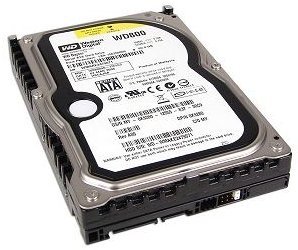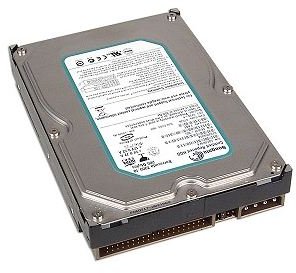A Guide for Upgrading Your Hard Drive: What do You Need?
Upgrade, or buy new?
Typically, when a machine begins to show its age, the natural instinct is to upgrade to a more up-to-date computer to keep up with demands of upcoming software. What a lot of users don’t know is that they can save a lot of money by just replacing an obsolete or dying component. Why a lot of users don’t consider upgrading is usually a result of misinformation, or fear of not having a clue of what to do. This guide will show you the different types of hard drives from which to choose, and which features you should look for.
ATA/IDE vs. SATA

ATA (Advanced Technology Attachment), also known as IDE (Integrated Drive Electronics), and SATA (Serial Advanced Technology Attachment) are the connectivity devices that hook up hardware to the motherboard of the computer. It is one of these two attachments that the hard drive uses, depending on the age of your machine. If your computer was manufactured during 2003 or earlier, then it is very likely that you have the original ATA/IDE attachment. From 2003 and later, new machines come equipped with SATA technology.
If you’re not sure of the year of the device, or if your computer was constructed in 2003 and are uncertain which connection it uses, try and collect important information (serial numbers, model numbers, etc.) that can be found somewhere on the tower of your computer (usually the back), and go to the manufacturer’s website. Input the data at their website and you should be able to find out the age of your machine. If you still have the original box that your computer came in, you can check the information on that as well. Using the UPC bar code on the box is also useful: go to a search engine and type the number in and see what happens. You may find a list of websites that shows important information on your machine. Failing that, try contacting the manufacturer directly to find out exactly what you need to know.
The importance of the cable cannot be overstressed. You absolutely must have the right connection for your new hard drive, or it will not connect to the motherboard.
Buyer’s Checklist
After figuring out which connection your hard drive uses, now you can start looking at what type of components you should look for in a new disk drive. As can naturally be expected, the more features on the hard drive, the more money you will be required to spend.
Laptop or Desktop?
- For desktop users, you need to find a hard drive that is 3.5" in size, whereas laptop users need to search for a hard drive that is 2.5" in size.
Storage capacity:
- With far more hard drives coming out with considerably greater disk space than before, it won’t be too difficult to find drives that have at least 200GB of space and more for a reasonable price. Of course, all of this depends on what you are planning to store on your machine. If you have a large number of multimedia files (videos, music, pictures, etc.), on top of other programs that require a lot of disk space, then you will want greater storage capacity.
RPM (Revolutions Per Minute):
- While we usually consider RAM and CPU as key components to how fast the computer runs, the RPM of the hard drive also needs to be considered. The RPM affects how quickly data can be read from the hard disk. The higher the number, the faster your data will load. If you use your computer for intensive gaming, or access to high-quality audio or video files, it is recommended to get an RPM of at least 7200. If the most use out of your computer is from web browsing or word processors, then 5400RPM should be the bare minimum.
Buffer size:
- The hard disk’s buffer is its memory cache. If you’re familiar with the cache on a web browser, then this works pretty much the same way. Essentially, it stores data temporarily that is likely to be used by the CPU to ensure faster performance. While the standard buffer size is 2MB, having a disk drive with at least 8MB or 16MB is not a bad idea. It works in conjunction with the CPU and the RAM to ensure faster performance of your computer.
Back-up or Data Transfer
- If you choose to have your hard drive installed at a retailer, (which is never a bad idea), at times they will offer to transfer data from your old hard drive to the new one. Depending on the retailer, this could be an expensive process. There is always the option of backing up important documents to an external hard drive, flash drive, or online storage (such as Sky Drive). At which point, once the operating system has been re-installed on your machine, or once the recovery discs have been run (which should come with every computer unless you built yours yourself), you can simply transfer your backed-up files onto your new disk drive.
Take these major components into consideration, and your hard drive needs should be satisfied in no time.
